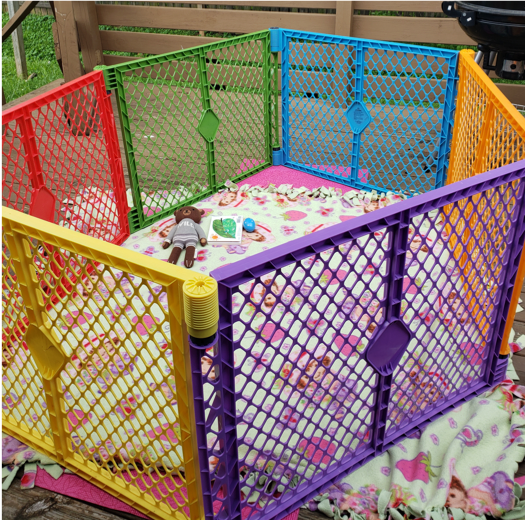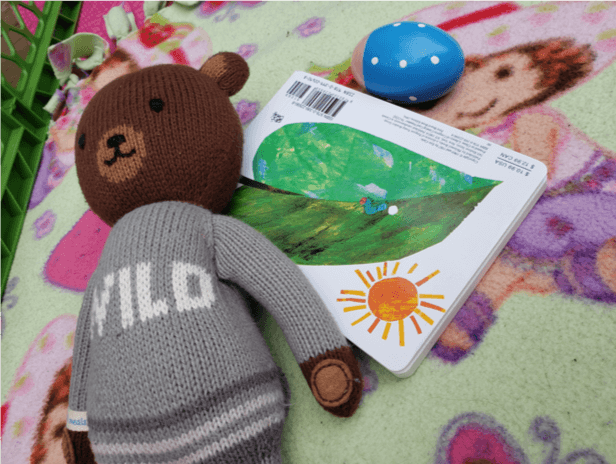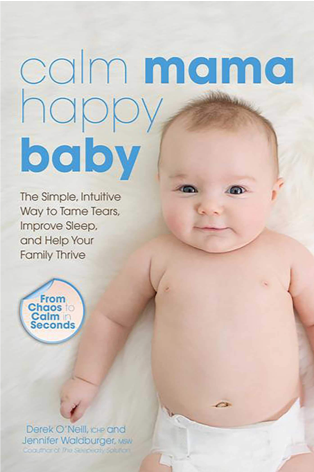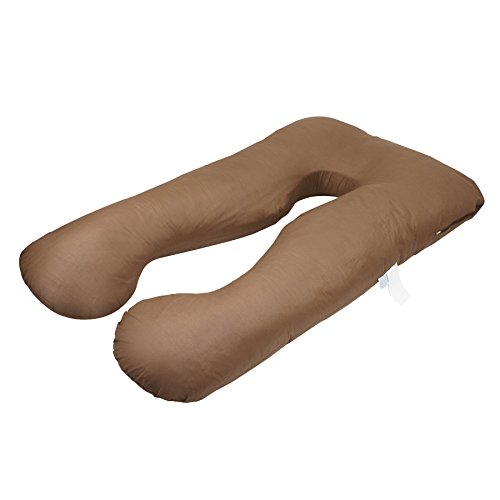Note: This article may contain affiliate links
Motherhood can be a profoundly spiritual experience, but the act of parenting itself ushers in the biggest enemy to spiritual healing and mindfulness: stress. Stress and anxiety rob us of our inner peace. They whisper lies into our ear: you’re not doing enough, you’re a bad mom, the house is a mess. It is incredibly easy to get completely swept away by these lies.
Meditation reconnects our physical bodies to our spiritual selves.
One of the most useful tools we have available to combat these feelings is meditation. Meditation reconnects our physical bodies to our spiritual selves. It transcends any religious or spiritual belief. Meditation may be the way that you pray. It may mean something deeply sacred to you. It may be a means to treat insomnia or other ailments, or it could simply be a way to clear your mind. Regardless, there are benefits for everyone.
During the early days of motherhood, I discovered that I desperately needed to turn my periodic meditative practice into a part of my regular routine. I created a special space for it (more on that later) and was intentional about setting aside time to do so, and I discovered that it vastly improved my mood, my relationship with God, and helped me to become a better mother.
At the time, I was reading a book called Calm Mama, Happy Baby: The Simple, Intuitive Way to Tame Tears, Improve Sleep, and Help Your Family Thrive by Derek O’Neill and Jennifer Waldburger. The book was an incredible resource to me, as I learned that babies are sponges who pick up on their mother’s emotions with great skill. I witnessed it happen several times in our home. I would get stressed out, and he would mirror me. As I began to get frantic, he fussed more. One day I realized, if he picks up on the negative emotions I am feeling, I wonder if he would pick up on my calm if I included him in my meditative practice.
The results were incredible. Not only did meditation calm my child, and bring about a gentle sort of bliss, but it often also lulled him to sleep. As he aged, our practice had to change. As he continues to get older, it will evolve more and more. Below are tips and recommendations about how to meditate with your child at any age.
The most important part of any meditation is to set intentions and expectations. It is very important to understand up front, that meditating with a child will be vastly different from meditating alone. Do not expect to do any deep work with your child. This is a moment for you to reduce stress, connect with yourself, calm your mind, bond with your child, and connect with your environment. Understand that your session may not last very long if your child needs to end it. Even a few minutes of meditation can be helpful.
Some benefits of regular meditation include:
- Increased focus and attention span
- Increased immunity
- Increased awareness and empathy
- Decreased blood pressure
- Pain management
- Improved sleep habits
- Increased energy
- Reduced stress and anxiety
Infancy
In a perfect world, we would all meditate with our children straight from birth. Starting before your child is mobile allows you several advantages, the biggest being that you need not childproof any particular space. For me, the ideal space to meditate is in darkness.
I chose my walk-in closet as my meditation room. I purchased the ZENY U-shaped maternity pillow during my pregnancy, and I keep it in the closet to sit on when meditating. Set up your space in whatever way is comfortable for you.
Resume your normal meditation with your child in your arms/on your lap. In the earlier stages of infancy, my son always wanted to nurse during our sessions, even if it was not quite time for a feed, and almost always fell asleep by the end of it. It is a good idea to prepare meditation around your child’s feed times, or to prepare a bottle, or have the breast accessible to your child during the session. If you would like to use meditation as a means to get your child to sleep, be prepared with a Moses basket, co sleeper, or, if possible, meditate near a crib or pack and play.
If your baby is older and more alert, you may choose to bring a toy into the room with you. Choose a quiet toy that will not disrupt your practice, but something that will keep her content.
Toddlerhood
The toddler years change so much, and differ greatly from child to child. This stage will require the most creativity and flexibility. Younger toddlers will not be able to voice their needs and desires, so it is important to address them in advance. Make sure that your child is dressed comfortably and has a clean diaper. Plan to meditate after they have eaten a meal or snack. Plan to meditate after your child has had ample time to run around and play independently.

It is most important at this stage, to be sure to create a safe space for your child. Because your eyes will likely be closed, you will want to make sure that you are in a childproofed area. My favorite setup is to throw down my yoga mat and a blanket, and enclose our North States Superyard. It is available for purchase at Target and on Amazon, and you can also purchase additional panels, including a door if you like. My son and I both feel most at ease in nature, so this is a great choice for us. He normally protests to being enclosed in any space, but he enjoys this setup very much, so even if you don’t think your kid will like it, give it a try.

Provide your child with a few toys. I carefully chose three options in the photo above. The bear is my son’s favorite toy to snuggle. The book is a beautifully illustrated book about nature. While I normally advise against bringing a toy that makes noise, I liked the shaker because it is a gentle sound. Children may hear the sounds of your music or guided meditation and wish to join in or connect in whatever way they know how, and a wooden shaker is a lovely way for them to do so.
If your toddler will sit still, I recommend having them on your lap or holding your hands. Children mimic their parents’ breathing very early on, so even though they may not understand if you ask them to take a deep breath, being in physical contact with them is a great way to share that and teach them to relax. If they do not wish to sit with you, it is okay.
Young Children
Everyone’s journey through meditation will look a little different, so don’t try to force your child to meditate with you, but there is no reason that you should stop sharing this practice with your child as they enter preschool and elementary school. Simply remind them that it is time to meditate, and continue creating an intentional space to do so. They may simply wish to watch as you meditate.
If your child is resistant to being still with you, find out what other activities center them and clear their mind. Yoga, hiking, biking, playing an instrument, or even praying aloud together could all be ways for you to nourish your child’s spirit. If you are having a difficult time discovering something that feels meditative for you and your child, make an effort to learn their love language, and try to address this during meditation. For example, if your child’s love language is physical touch, try meditating while snuggled up on the couch. If it is words of affirmation, try a weekly meditation followed by a ‘check-in’ where you discuss some of your favorite moments that week, and challenges you each hope to conquer. Remember that this is your practice with your child and there is no wrong way to do it. Don’t be discouraged by the way that someone else’s practice may look.
Pre-Teens and Teenagers
By this age, your child is old enough to meditate exactly as you would! If it is new to them or to both of you, it could feel a little awkward at first, but don’t let these feelings get in your way. Try having a conversation about how you’re feeling beforehand, and discuss what you would both like to get out of your meditation. Start small and work your way up to bigger goals as you become more practiced. Your very first time is a success if all you did was clear your mind. Eventually though, you may be able to use meditation to help yourself make a big decision or work through a challenge you’ve been facing in the workplace.
As mentioned in the section for younger children, learning your child’s love language can help you to create the perfect environment for their practice, but if being still and quiet is not something that they are comfortable doing with you, replace the practice with other repetitive or mindless activities that allow you to clear your mind, relax, and find peace together. In the meantime, continue your regular practice on your own. Honing your skill will allow you to identify which other activities feel most meditative for both of you.
Final tips:
Some people are able to clear their minds and meditate in silence, but most will find it beneficial to listen to a guided meditation. There are several apps available to download, but there are also tons of free videos available on YouTube. My favorite videos are by Michael Sealey, but you can search just about any type of meditation that you like and there will be many videos of varying lengths. If you’re unsure where to start, try something like “guided meditation to clear your mind,” or “guided meditation to improve mood.”
If you do not like guided meditations, or find another voice to be distracting, try listening to binaural beats instead. You can find these just about anywhere you stream or download music. Some of them are created to suit different needs, but anything will work.
Start short. Unless you are starting with a pre-teen or teenager, start with a 10-minute meditation. If your child responds well to this, try building up slowly to a 30-minute meditation. Remember, meditation increases attention span, so this will get easier as you go.
However you choose to do it, you are sharing a wonderful gift with your child that will strengthen the bond you share, increase their self confidence, and help you both to achieve inner peace. What an incredible way to let them know how deeply you love and cherish them.










Reader Interactions